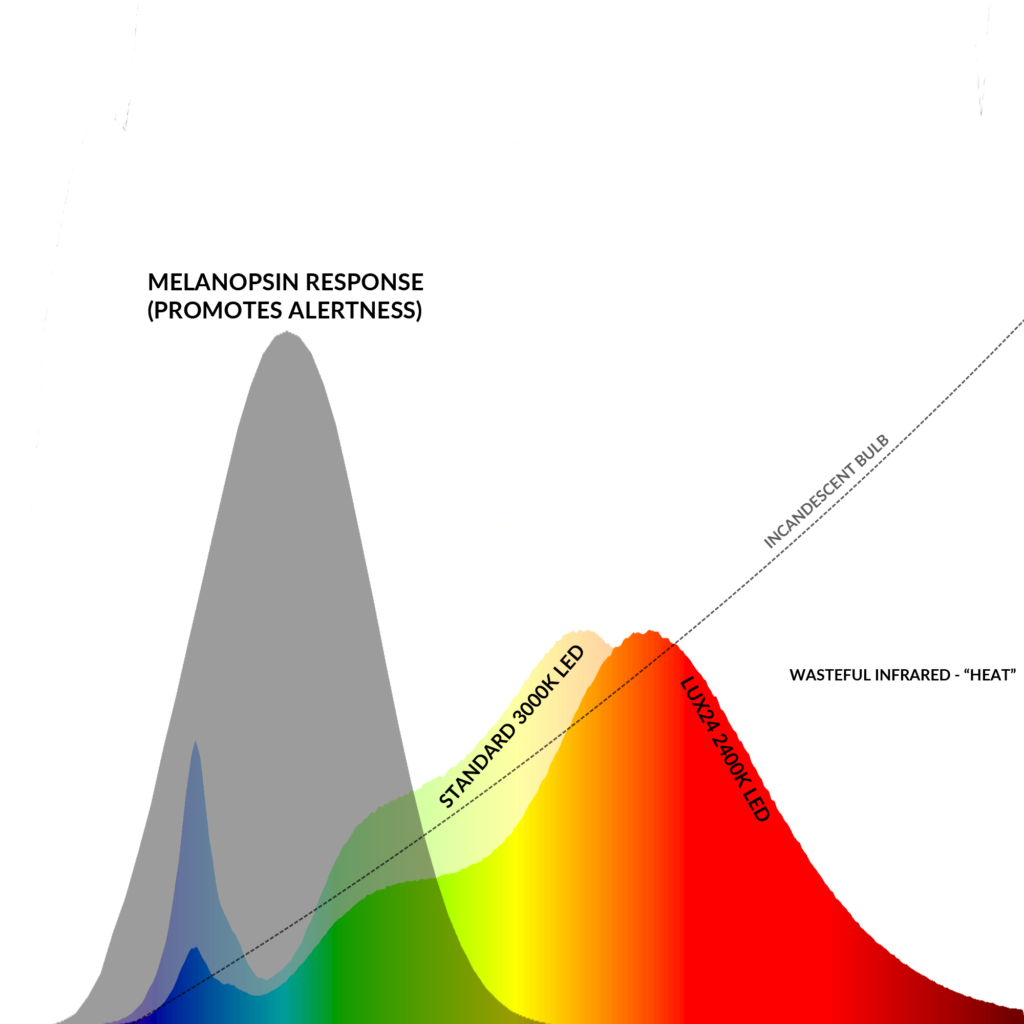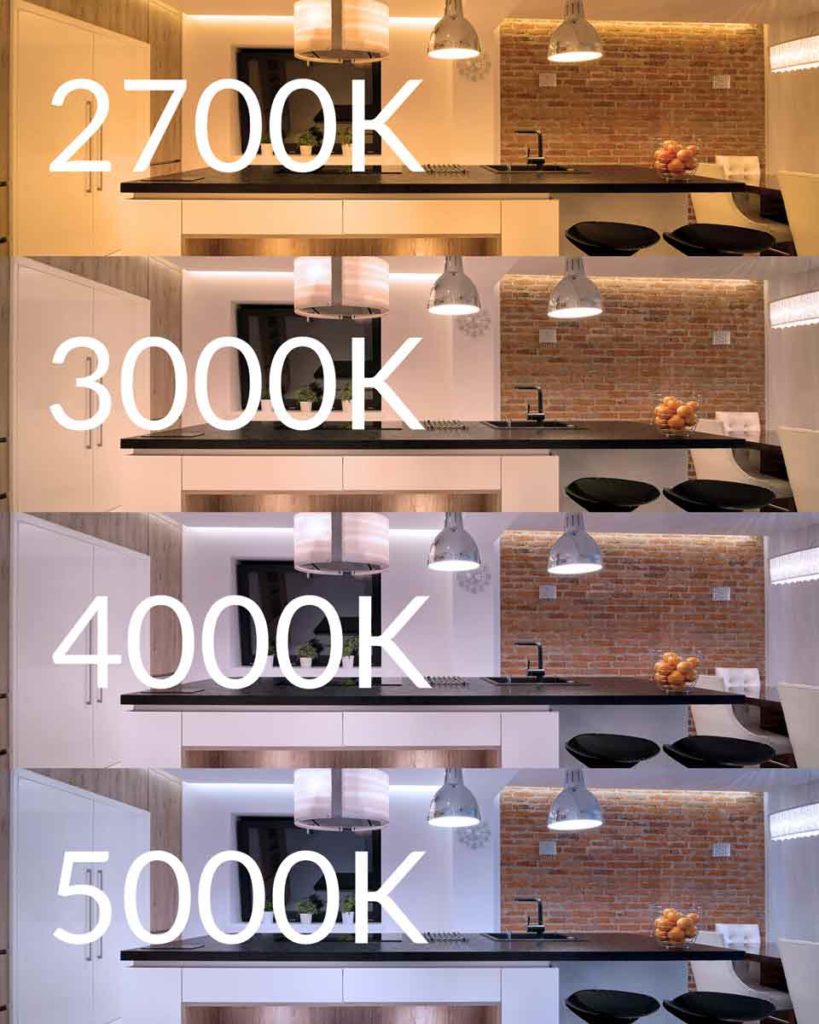Are LED Lights Safe to your life?
Article from waveformlighting.com
Are LED Lights Safe? Are They Harmful to Your Health?
LED lights are rapidly becoming the standard lighting technology in many applications, and in many areas have become the only option as incandescent and CFL lighting options become phased out.
LEDs are of course energy efficient, last many times longer and are therefore preferable from an environmental standpoint, not much is mentioned with respect to the human and consumer side of things - especially when it comes to the safety and health effects of the emitted light itself.
Electrical and toxicity concerns of LEDs are generally in line or superior when compared to incandescent and fluorescent lamps. Most governmental authorities have continued to adapt existing building and safety codes to prevent fire and electric shock risks - and of course, it is always a smart idea to always practice basic electrical safety.
There exists very little, however, in the way of understanding or regulations for the quality and safety of the light emitted from LED bulbs. In this article, we discuss the health impacts of the light emitted from LED lights - in particular, "blue light" as it relates to the LED spectrum, as well as the effect of flicker that is prevalent in LED lights.
Blue Light Hazard in LED Lights
LED bulbs do not emit any ultraviolet light, but in recent years, "blue light" has been one of the most commonly discussed dangers and risks that surround LED lights and display screens that use LED backlights (smartphones, tablets, TVs, etc).
Blue light is known to stimulate the production a melanopsin, a hormone in our eyes that promotes alertness. Natural daylight has plentiful blue light content, and it is thought that melanopsin helps us regulate our circadian rhythms as the day breaks and exposure to natural daylight begins.
Figure 1: Graph showing the sensitivity curve for melanopsin response. Light energy in this wavelength band promotes alertness.
LED lights and our devices do contain a significant amount of blue light (but with important caveats and qualifications - see below), and the concern is that excessive use during evening hours will cause our bodies to continue the production of melanopsin, making it harder to fall asleep naturally.
During evening hours, our bodies' natural expectation is for blue light exposure to be diminishing, but by continuing to use LED devices rich in blue light, we are altering the natural biological clock in our bodies.
So is the blue light in LED light bulbs a health concern? Yes, but a variety of factors will affect the severity of the risk:
- The LED light intensity - placing a light bulb close to your face will expose you to a lot more blue light than sitting farther away from it
- The length of time you are exposed to the LED light - the longer you are exposed to the blue light, the more significant the melanopsin production
- The specific time of night you use the LED lights - exposure during early evening hours will have a much lower risk than exposure late at night just before going to bed
- The type of LED light you use - color temperature, CRI and the light spectrum can all affect the relative amount of blue light in a light's spectrum. See M/P ratio for more information.
The first three factors above are quite self explanatory and these are straightforward steps you can take to reduce your exposure to blue light. When it comes to choosing the right type of LED bulb for use during evening hours, you may want to look for a light bulb designed for circadian health in mind.
In general, you will want to look for bulbs that provide more red energy, and less blue energy, in their respective light spectra. Red energy (long wavelength) is plentiful in light given off by candles and flames - types of "light" that our bodies are already accustomed to being exposed to at night, and does not impact circadian rhythms.
You may want to consider the following factors:
- Choose a bulb with a color temperature of 2700K or lower, preferably 2400K. These bulbs are usually labelled "warm white" but confirming the exact color temperature can be preferable. Avoid LED lights above 3000K and/or labeled "bright white," "neutral white," "cool white," or "daylight white" as these lights will generally have a crisp, stark white color. LEDs with this light color contain a significant amount of blue light in their spectrum.
- Choose a bulb with a high CRI. All else equal, a higher CRI indicates less blue light and more red light. Even for the same 2700K light color, for example, a higher CRI LED bulb will have less blue, and more red energy.
- If a manufacturer provides it, look for the M/P ratio which provides information on the relative amount of blue light in a light's spectrum. Ideally, use bulbs with an M/P ratio of 0.4 or lower to minimize blue light exposure.
So, is the blue light in LED lamps harmful to your health and do they present a safety risk? Yes - they certainly do - but the risks and concerns are specific to overexposure to blue light during evening hours, and can be effectively managed and controlled. Blue light is similar to caffeine, and similar common-sense precautions should be taken. For example, you wouldn't want to down a double-shot espresso an hour before going to bed!
Figure 2: Graphic showing the differences in color temperature. Warmer color temperatures (2700K and below) are most beneficial for promoting relaxation and rest.
By paying attention to the LED bulb specifications, and taking appropriate precautions and using some basic common sense, you can safely incorporate LED lights in your home without any negative health effects of the "blue light hazard."
Blue Light Benefits (It's not all bad!)
Despite all of the buzz around blue light being a hazard, it is important to remember that the health risks of blue light are very specific to overexposure during evening hours.
In fact, blue light is an essential part of our circadian rhythms, as exposure during the morning and daylight hours provides an indication to our bodies that it is daytime and time for us to be alert.
Figure 3: A bright, sunny day with blue skies has plenty of intense, blue light content.
The best way to maintain regular, healthy and appropriate exposure to blue light is to utilize natural daylight as much as is possible. Of course, many of us live in locations that do not have access to natural daylight for a variety of factors - whether they are architectural, climactic, or geographical.
Preliminary research indicates that a lack of exposure to blue light can have detrimental health effects. Health conditions such as SAD (Seasonal Affective Disorder) have been suggested to be caused by a lack of exposure to natural light, especially common during winter months.
In such situations, the next-best solution is to consider light therapy using full-spectrum lighting - learn more here.
LED Flicker and Health Risks
Like early fluorescent lighting systems, LED systems are prone to producing rapid flickering or stroboscopic effects, and this is a significant area of concern when it comes to LED lighting and health.
Figure 4: Vertical banding in a simple smartphone photo shows that the LED source is not a constant stream of light - instead, they are emitted in short bursts.
Many LED bulbs produce flicker - a rapid switching between on and off states. Because the flickering happens at a very fast rate - typically 120 times per second or faster - it is not immediately observable to humans and appears to us as a light bulb of steady and constant brightness.
Flicker is a difficult aspect of lighting to observe and measure, as it is not immediately perceptible or noticeable, but preliminary research suggests that it can have detrimental effects on health and safety.
In other words, just because flickering is not immediately evident or perceivable to our eyes, our bodies can subconsciously react and respond to what is essentially a very rapid strobe light. Flicker has been associated with eye strain, fatigue, headaches, and even elevated risks of seizures.
Even without the backing of significant medical or scientific research to back it up, it is hard to argue for any positive health benefits of flicker - it is simply not a natural way for humans to be exposed to light. Natural daylight, candles, and even (most) incandescent bulbs provide a steady stream of light without any flicker. Especially for populations that are sensitive to flicker - such as the elderly and those with certain medical conditions - flicker is an issue that is always best avoided.
How to Determine or Measure Flicker
For some LED bulbs with more serious flicker, objects in motion can appear to have a stroboscopic effect. Waving one's hand under an LED, for example, might create the illusion of discontinuous movement.
A common phenomenon you may have observed is dark bands that appear on your phone camera. While some modern smartphones have begun to incorporate software to attempt to mitigate this effect, this is another certain indication that an LED bulb is flickering.
Although the most surefire way to measure flicker is to use specialized measurement equipment such as a oscilloscope, a quick and effective way exists on most smartphone cameras.
Simply use your smartphone's camera app to record a short video clip in slow motion. Most smartphones such as iPhones will be able to record video at up to 240 fps - a frame rate quick enough to capture flickering that occurs in the 120 -360 Hz range, which is also the most problematic frequencies when it comes to the health effects of flicker.
Causes of LED Light Flicker and How to Avoid It
Generally speaking, there are two types of flicker in LED lights. Below, we'll discuss them and what to look for when trying to avoid them.
Flicker Caused by Alternating Current and Insufficient Filtering
The first type of flicker is caused by the AC (Alternating Current) waveform used in power transmission. The electricity that flows through the wires in our homes and offices are actually fluctuating in a sinusoidal waveform with changing polarity 50-60 times per second (hence the term Alternating Current). In an AC system, the electrical current actually switches between on and off states, as well as its current flow direction (from + to -) at 50-60 times per second.
LEDs are DC devices and cannot have their polarity reversed, and therefore are incompatible with AC systems without the appropriate LED drivers and power supplies. The design of the LED drivers and power supplies dictates the extent to which an LED will flicker.
The most basic LED driver will simply rectify the AC signal without smoothing, and simply provide to the LED the inverse of the AC signal when the polarity switches. Because the AC signal goes to 0% 2x times per cycle when the polarity switches, the result is a light emission that switches between its maximum (100%) and minimum (0%) 100-120 times per second (@ 50-60 Hz AC), creating a relatively significant flicker effect.
With more advanced LED drivers, in addition to rectifying the AC signal, additional capacitors are used to smooth out the spectrum during the polarity switch in an AC signal.
Most LED bulb manufacturers, unfortunately, do not publish flicker specifications. When available, look for LED bulbs with a flicker free designation, along with a flicker percentage below 5%, flicker index less than 0.02.
Flicker Caused by Dimmers
The second common cause of flicker in an LED system is in its dimming systems. LEDs are digital devices, and as a result, controlling the output is most practical using PWM (pulse-width modulation). PWM produces a square wave of either "on" or "off" states at a relatively fast frequency.
LED dimmers use PWM to create the perception of dimming by adjusting the relative time durations between "on" and "off" states, but they do so at a variety of frequencies. Basic PWM LED dimmers operate at 300 Hz or lower, while truly flicker-free LED dimmers operate at 25,000 Hz or above. By raising the frequency to such high rates (e.g 25,000 times per second), the rate of switching becomes so rapid that it is far above the threshold of even subconscious perception for the human body.
Dimmable LED bulbs must combine interpreting an AC waveform's dimming signal and output a corresponding PWM signal, and this most frequently results in flicker rates that are too high.
When possible, avoid the use of dimmers altogether, as they introduce an additional risk factor when it comes to flicker. If dynamic brightness control is essential, avoid "dimmable" LED bulbs, and opt for PWM dimmers with high frequencies < 25 kHz, and ensure that they are used with flicker-free power supplies.
Bottom Line
LEDs are a new and exciting lighting technology, but they are not without health and safety risks. By being aware of the spectral content as well as the flicker metrics, you can be sure to minimize the risks of LED lighting on your health and well being.





Comments
Post a Comment